Thanksgiving DIY - "Sweet Potato Pie"
- winnykaygee
- Nov 24, 2020
- 5 min read
Updated: Jan 16, 2021
Happy Thanksgiving week! This unusual year just might call for some creature comforts to mark the occasion of us making it this far... Today I'm sharing some steps for styling the “Sweet Potato Pie” floral centerpiece à la Farmgirl Flowers, adaptable for any florals you can get your hands on. A pretty pastel palette always reminds me of dessert, especially macarons (or as Team Farmgirl describes it: "home-baked happiness").

First things first - where to buy blooms? There are a couple wholesale florists near us, but with us limiting our outdoor activities this year, I usually just keep an eye out for fresh flowers at our neighborhood Trader Joe's, Wholefoods, Sprouts, Albertsons, or Ralph's (basically wherever our toilet paper, rubbing alcohol, or grocery search may take us). Pre COVID, we also loved going to the local farmer's market. And of course, there's always ordering from Farmgirl Flowers online.
DIY FLORAL ARRANGEMENT STEPS
Here's a quick overview, and I'll walk through each step in more detail with visuals below.
Step 1: Gather supplies: a water-filled vase (floral food optional), a pair of garden shears or sharp scissors, and of course, your beautiful blooms.
Step 2: Take inventory of your florals and greenery, if any - I find it helpful to sort by color and type.
Step 3: Decide on the shape of your arrangement (round vs. v-shape, etc...), or for more free flowing fun, simply start trimming and seeing where your artistic eye takes you.
Step 4: Measure your first stem against the height of your vase to make sure you're not trimming too short.
Step 5: Trim every stem at a 45 degree angle to allow the flower the maximum surface area for absorbing water. If any stems are out of water for more than 10 seconds, give it a fresh trim (learned this from Farmgirl!). Repeat for each stem.
Step 6: Build a foundation base by criss crossing stems. As you trim each stem, look for any damaged or spoiled leaves or petals and make sure to remove them gently so that the rest of the flowers and greenery don't get contaminated. Remove any leaves that are below the waterline.
Step 7: Keep building out your desired shape, all the while making sure there's enough room for each flower to breathe and that they're not packed in too tightly.
Step 8: Find a nice spot in your home that's out of direct sunlight to display your newly minted masterpiece! Change water every 1-2 days to extend the life of your centerpiece. Bonus: give your stems a fresh trim every 2 days; check and remove any flowers that start to wilt.
For more details and visuals on this "Sweet Potato Pie" centerpiece, scroll on!
Step 1: Gather supplies: water-filled vase (floral food optional), garden shears or sharp scissors, and of course, your beautiful blooms. When these beautiful Farmgirl Flowers arrived, I wasn't free to arrange them just yet, but I knew they'd be "thirsty" after traveling to me via FedEx. To get the rehydration process underway, I did a quick trim to remove just a tiny bit off each stem (all at 45 degrees) and popped them into a temporary vessel. This one happens to be a recycled bone broth jar. :)
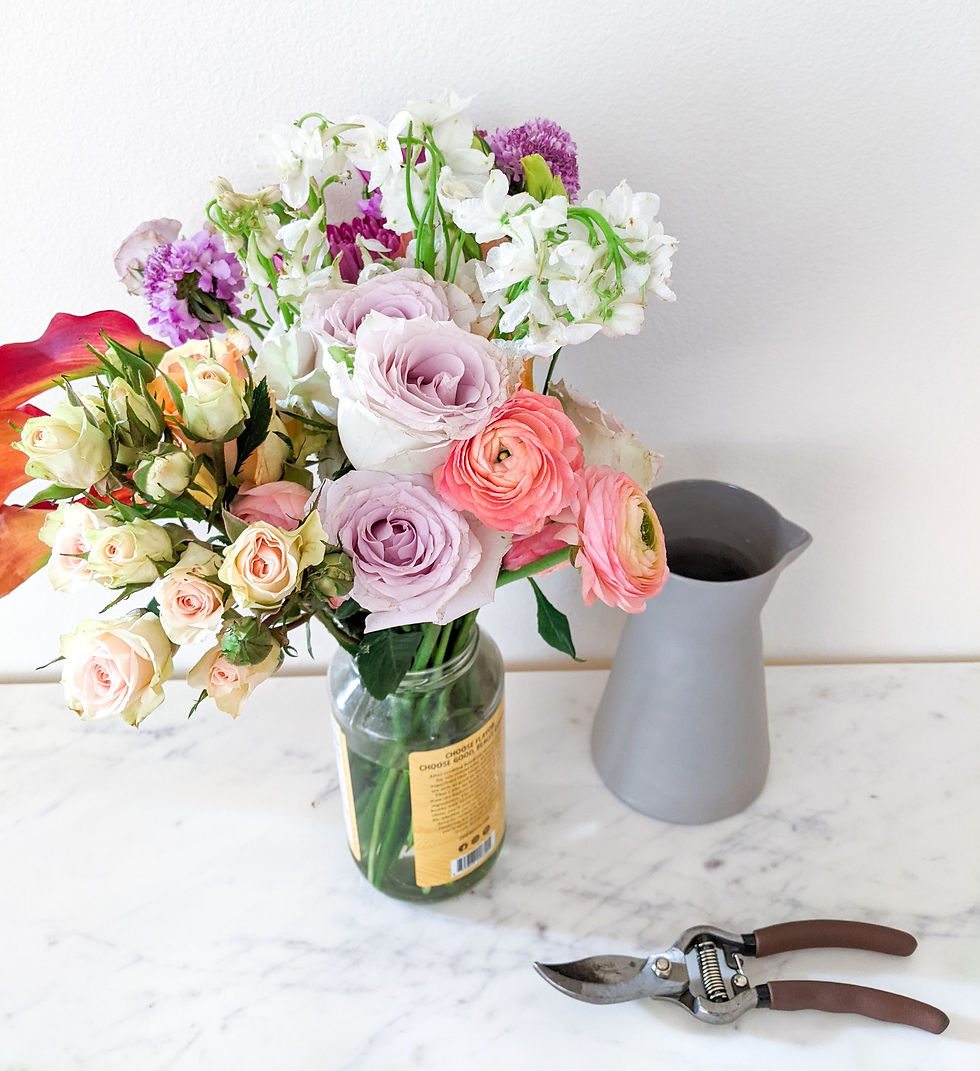
Step 2: Take inventory of your florals and any greenery - I find it helpful to sort by color and type. For this arrangement, Farmgirl Flowers did the selection for me, but if I'm looking for flowers on my own, I usually try to vary a few complementary colors, textures, and sizes.

Step 3: Decide on the shape of your arrangement (round vs. v-shape, etc...), or for more free flowing fun, simply start trimming and seeing where your artistic eye takes you. I've been watching Farmgirl Flower tutorials, and working on more of a v-shape, where one end of the bouquet is higher and the other is lower. It's easier to achieve this look and prevent heavier flowers from putting too much pressure on the lighter ones, if you start with the heavier, larger-headed flowers as a base and build upwards and outwards with lighter, smaller-headed flowers. These larger-headed roses are perfect to start with, and you can see in the below photo that there are some guard petals ready to be removed (slightly damaged, having served their purpose of protecting the rest of the rose during transit).
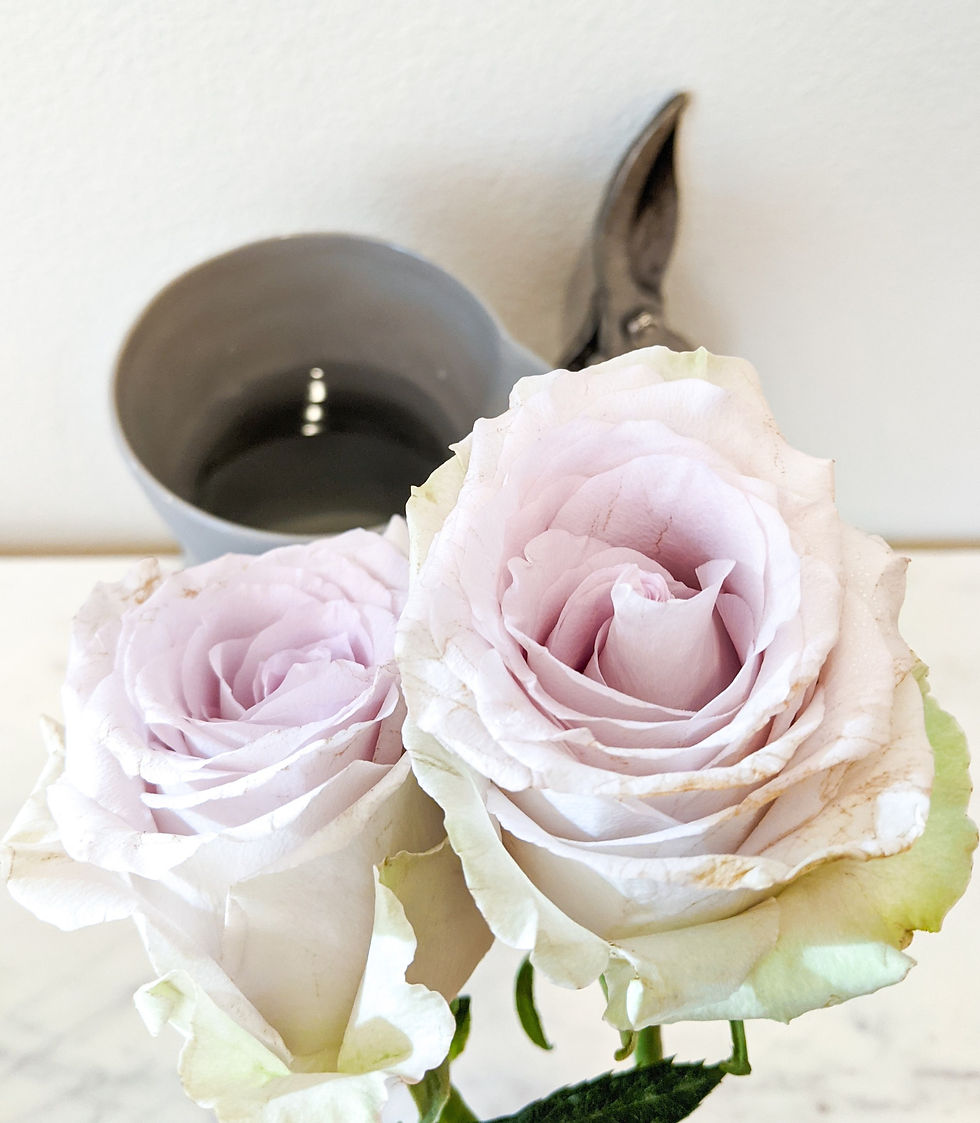
Step 4: Measure your first stem against the height of your vase to make sure you're not trimming too short. Farmgirl founder and CEO, Christina Stembel, always says "measure twice, cut once," since it's a lot easier to fix your mistake if you don't cut enough but not vice versa:
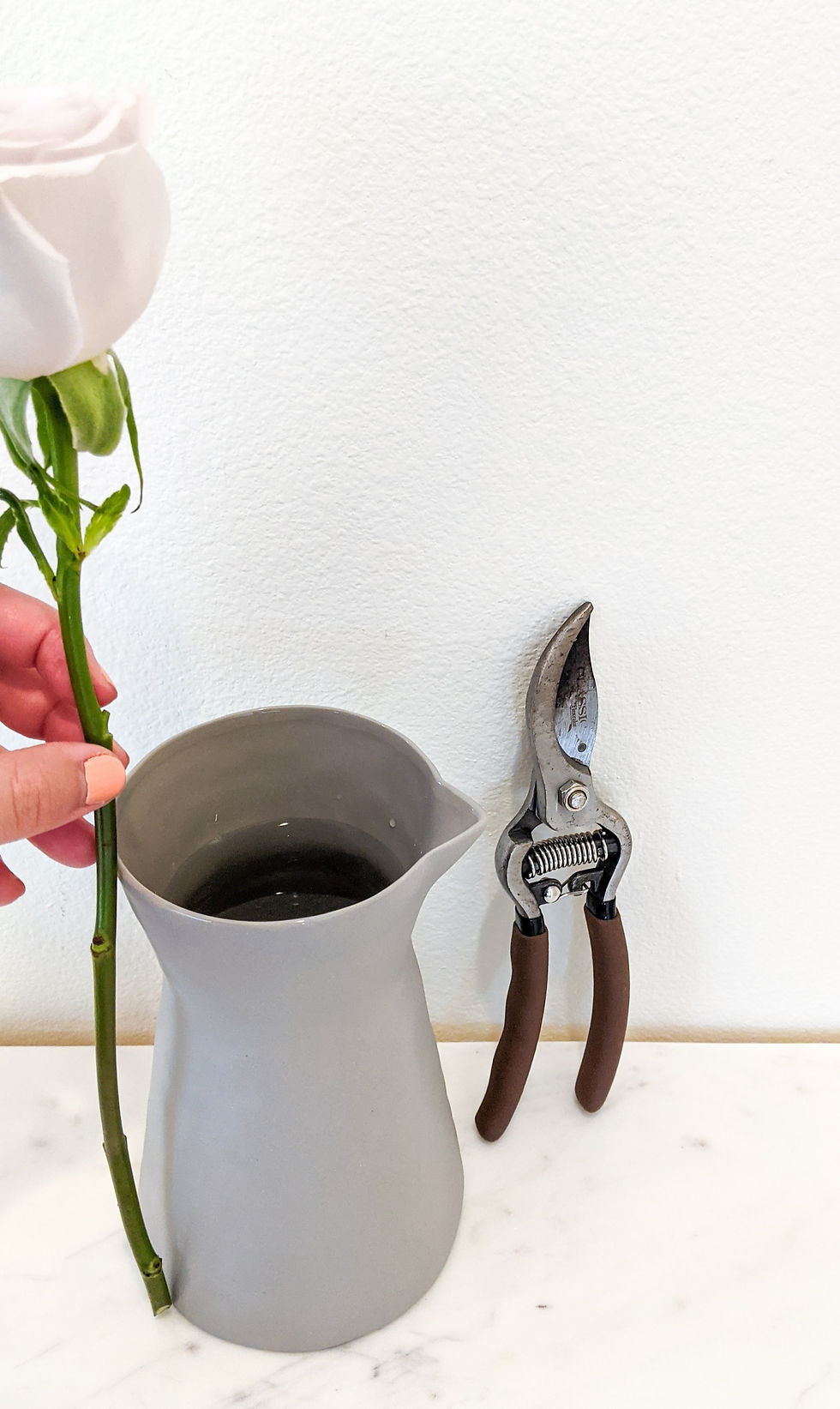
Step 5: Trim your first stem at a 45 degree angle to allow for maximum surface area for drinking water. If any stems are out of water for more than a few seconds, give it a fresh trim, as the bottom of the stem will begin to close up to protect against further moisture loss.
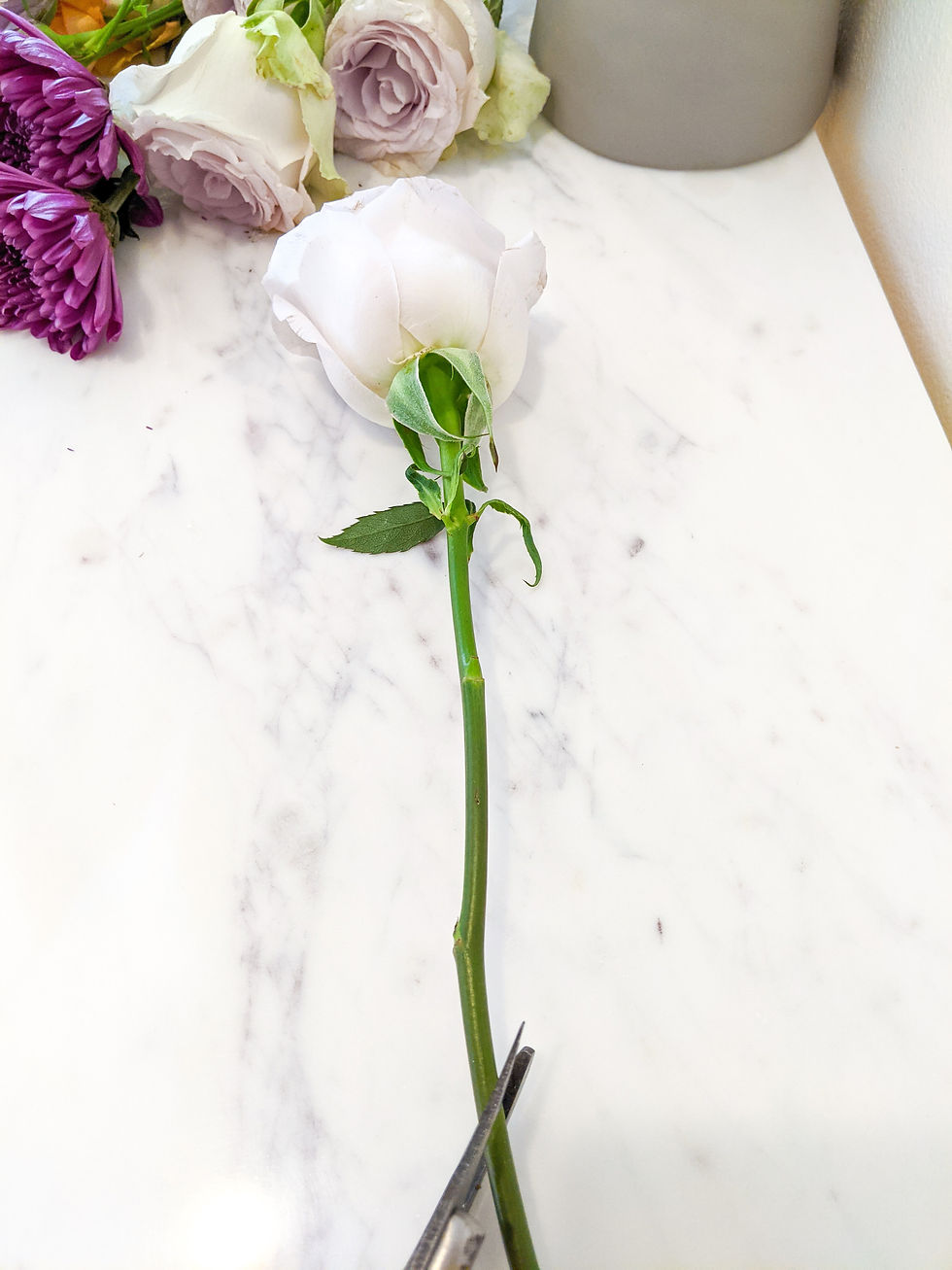
Step 6: Build a base by criss crossing stems:
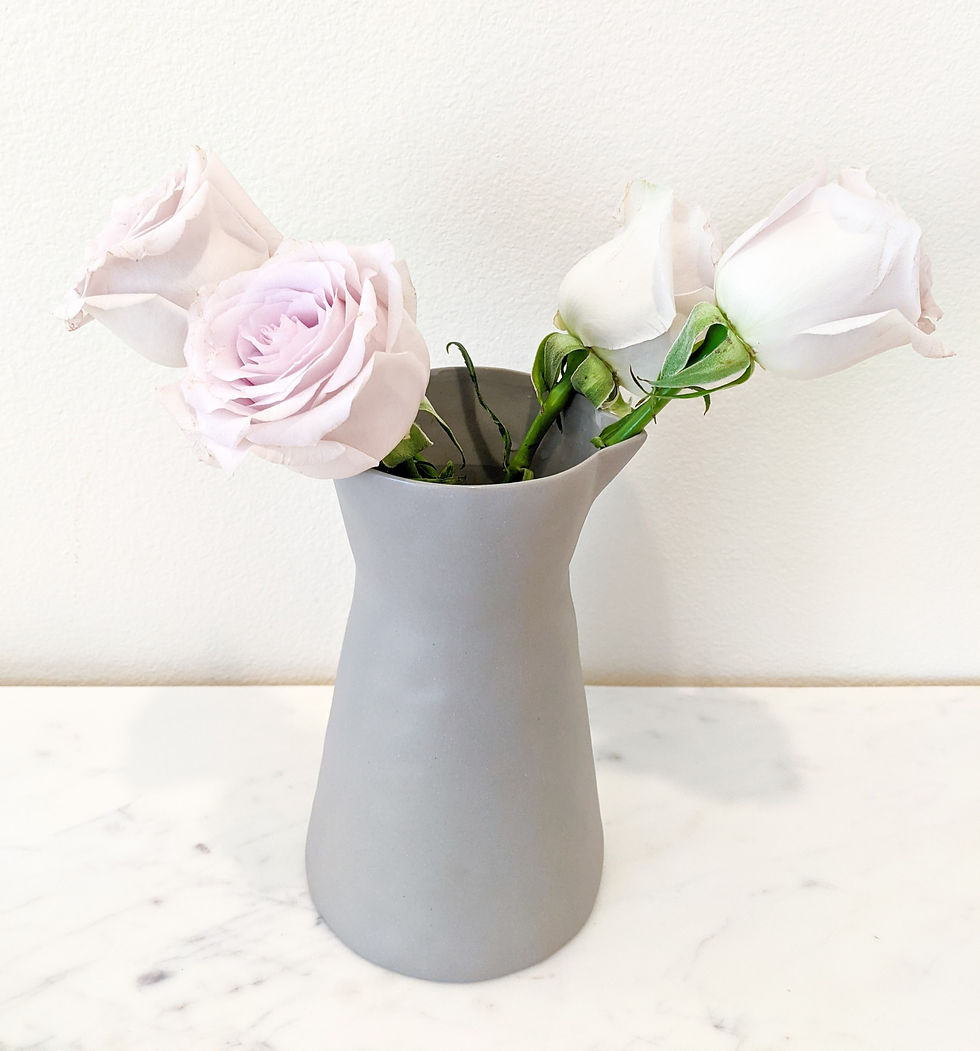
As you trim each stem, look for any damaged or spoiled leaves or petals and make sure to remove them gently, so that the rest of the flowers and greenery don't get contaminated. Remove any leaves that are below the waterline. Having any leaves sit in water creates dirtier water over time, and that will shorten the life of your centerpiece.

Step 7: Keep building your shape, and make sure there's enough room for each stem to breathe. If flowers in a centerpiece are packed too tightly together, this tends to encourage mold or rot more quickly.


Continue building upwards and outwards. Team Farmgirl recommends pairing two of the same kind at a time, and placing the larger one on the bottom and the smaller one slightly staggered and higher up. I've been enjoying that aesthetic, so I've tried to follow that tip here, but I agree with Farmgirl's founder and CEO, Christina Stembel; there aren't any hard and fast rules, so do whatever you enjoy looking at!

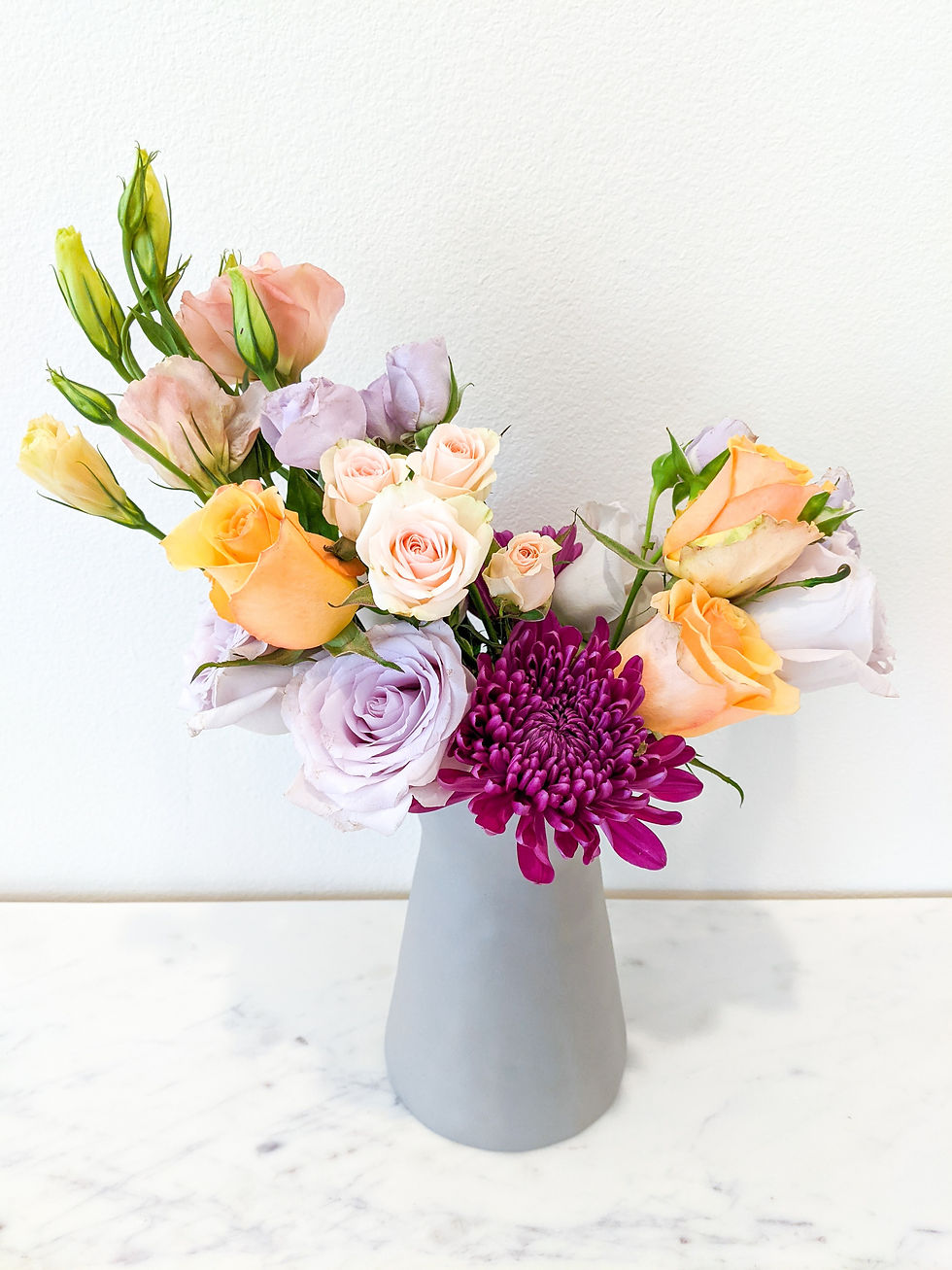
As you build, depending on your preferences, you may see that one end of your centerpiece will begin to look higher than the other. I like to go with this asymmetry and continue augmenting it, so I look for stems that have a natural bent or curvature to match that particular direction. I tend to end up with the left side being higher than the right, for that Farmgirl asymmetrical v-shape.
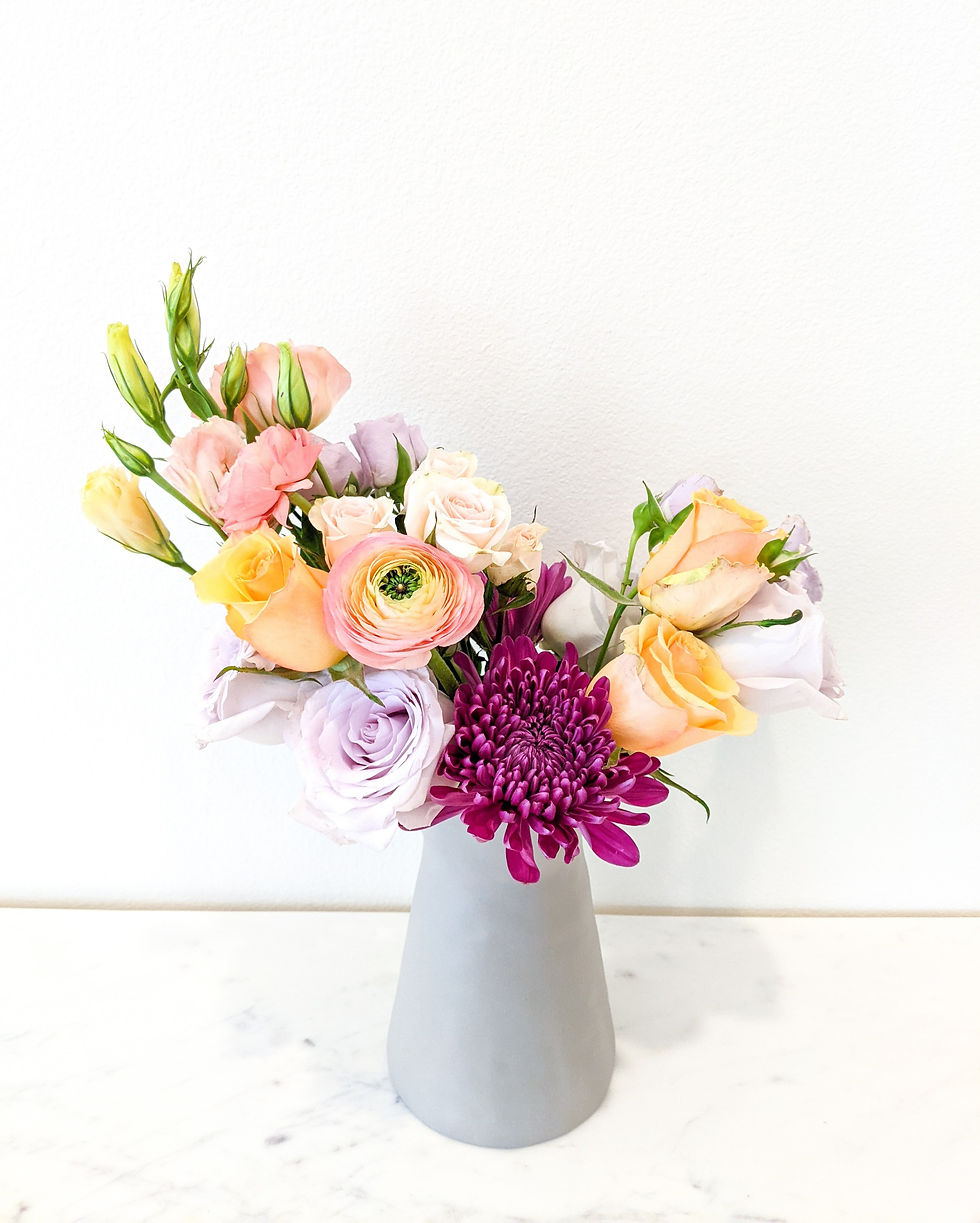
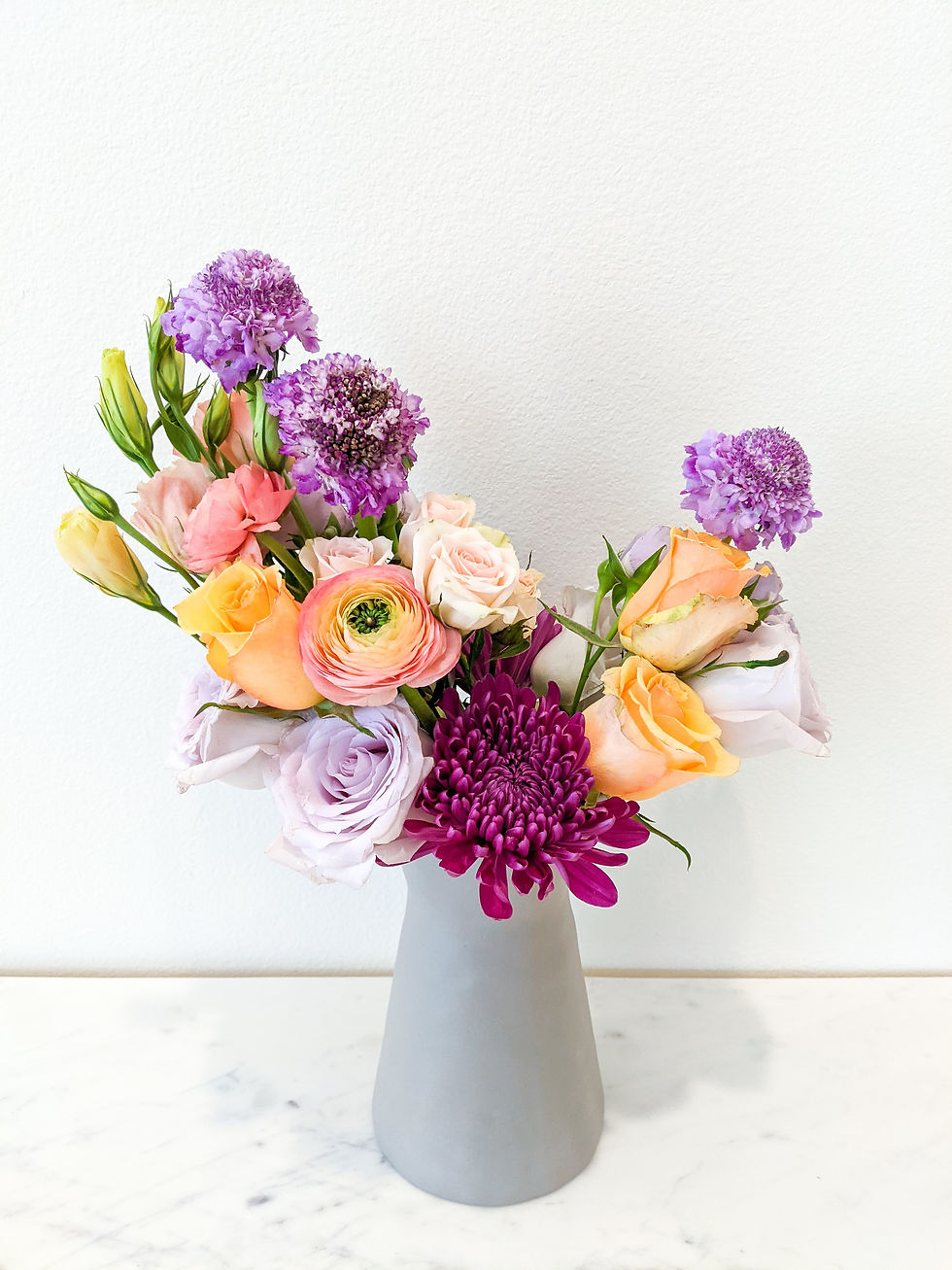
Once you have the desired height, you can also work on expanding outwards to increase the size of your centerpiece. Usually, I save a few pieces of greenery (especially beautiful smelling eucalyptus) for this purpose, but you can easily do this with an all floral arrangement like this one too:
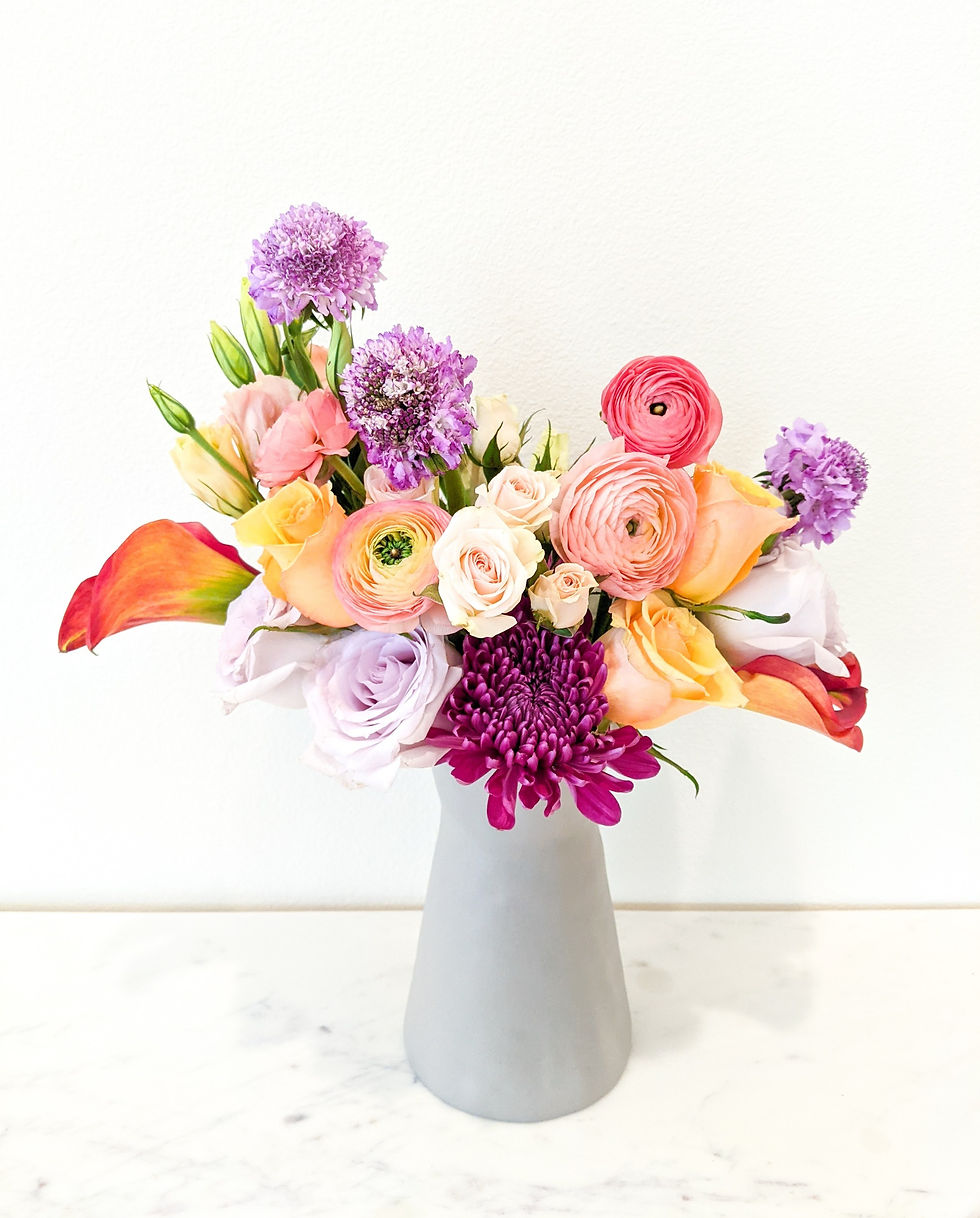
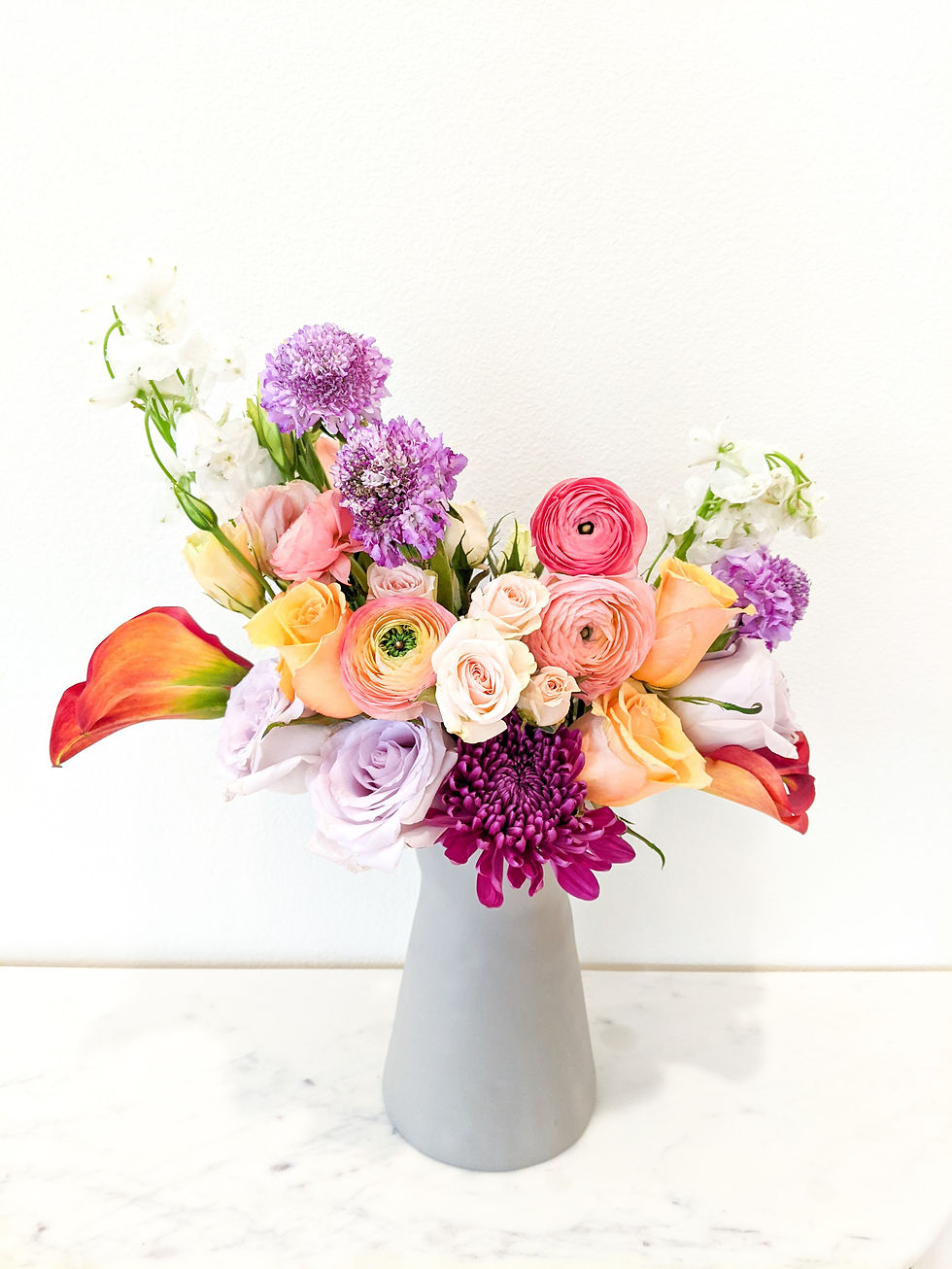
Look for any gaps - these are a great place to put your showstopper flowers aka the ones you want your eyes to be drawn to right away. For this centerpiece, it's definitely the peach and pink ranunculus for me!

Step 8: Find a nice spot in your home that's out of direct sunlight to display your newly minted masterpiece! Change the water in your vase every 1-2 days to extend the life of your centerpiece. Bonus: give your stems a fresh trim every 2 days and remove any flowers that start to wilt. Both will help prolong the life of the remaining healthy stems!
Hope you enjoyed this walk-through! Please feel free to let me know if you have any questions, or any thoughts on what else you'd like to see in a walk-through.
Wishing you and your loved ones a safe and healthy Thanksgiving!
#HappyThanksgiving #ThanksgivingDIY #ThanksgivingCenterpiece #FallBouquet #FloralStories #ThanksgivingBouquet #Thanksgiving2020 #FloralArrangement #FloralDesign #FarmgirlFlowers #FloralInspo #CenterpieceIdeas #DIYcenterpieces #FreshBlooms #Roses #Ranunculus #CutFlowers #PrettyPetals #Flowers2020 #FlowerMagic #FloralBouquet #FlowerPower #FarmgirlFlowers

Comments